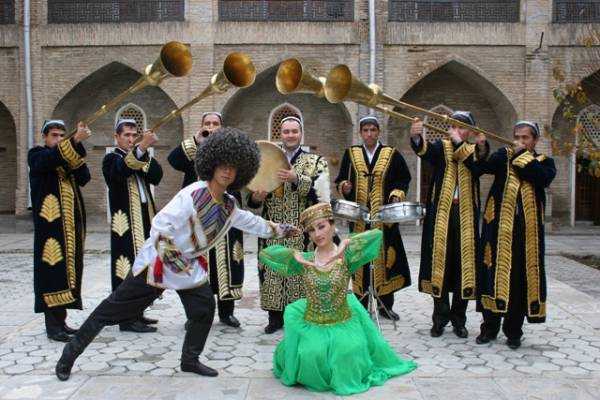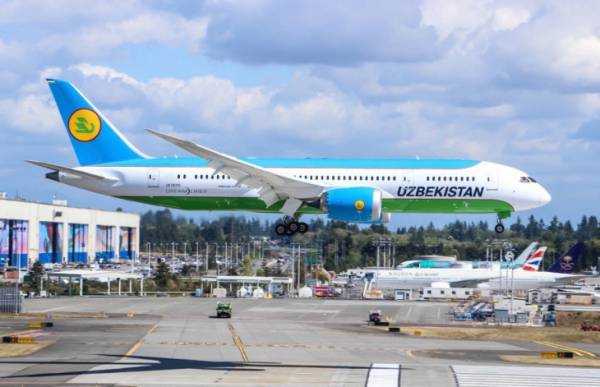
Uzbekistan is considered one of the cradles of human civilization, a country with a rich historical past. The culture of our people is one of the most unique and original, which has been formed over thousands of years. Since ancient times, on the territory of Uzbekistan Various types of art developed, including music.
Monuments of material culture and written sources that have come down to us testify to the ancient origins of the musical heritage of the Uzbek people. On monuments of fine art related to the culture of the Kushan period, one can see images of musicians. One of them is shown on the frieze with a stringed harp-like instrument in his hands, another with a wind instrument similar to a flute, and a third with a double-sided oblong drum. From this, one can conclude that the Kushans and Sogdians knew the main types of instruments and used them both solo and in an ensemble.
In the 9th-12th centuries (the "Renaissance Era"), Samarkand, Bukhara, Merv, Urgench and other cities became leading scientific and cultural centers. Local traditions were revived in all areas of science, literature and art, and a huge number of scientific treatises were created. The best examples of musical art received general coverage in treatises on music by such Central Asian scholars and encyclopedists as al-Farabi, Abu Ali Ibn Sina, al-Khwarizmi, Jami and others.
Since independence, one of the state's priority tasks has been the revival and preservation of spiritual values of generations, careful attitude to the cultural wealth of the country, and veneration of great ancestors. In recent years, significant work has been carried out in Uzbekistan on the in-depth study and further development of musical art. The country has created the necessary legislative framework for training young talents, which provides an opportunity for the younger generation to receive an education based on the traditions of Uzbek culture and art, and world standards. This also serves to stimulate the work of teachers, scientific creative workers in this field, as well as to strengthen the material and technical base of educational institutions of culture and art.
In all regions of the republic there are children's schools of music and art, equipped with new musical instruments, palaces of culture, colleges and lyceums in the arts. A special place in this list is occupied by the State Conservatory of Uzbekistan, which is rightfully considered the oldest higher musical educational institution in Central Asia. Since March 22, 2002, the staff of the university has been operating in a new building. Equipped with special modern equipment and instruments, this wonderful building has 305 classrooms and offices, 4 concert halls, 4 educational recording studios, a Museum of National Instruments, a Specialized Research Center, the Music Publishing House, a record library, and 4 sports halls. Thus, there is everything necessary for the implementation of fruitful educational, creative, research and performing work.
Our country also hosts a large number of international musical events designed to promote the revival, preservation and enrichment of the traditions of musical folklore and academic performance skills. Among them, we can highlight the International Music Festival "Sharq Taronalari" ("Melodies of the East"), held every two years in Samarkand. Musicians and performers come here from different countries of the world, who introduce the participants and guests of the festival to the unique national musical culture of their peoples.
In addition, in order to develop national musical art as an important means of educating young people in the spirit of love for the Motherland, loyalty to the ideas of independence, respect for national traditions and values, various creative forums, festivals and competitions of national significance are held in Uzbekistan. Song contests such as "Yagonasan, Muqaddas Vatan", "Nikhol", "Mardi Maidon" help to identify young talents in the field of national song art, their comprehensive support and stimulation. Various creative projects and forums are regularly held to strengthen creative cooperation between poets, composers and performers.
Monitoring is carried out throughout the country to identify and preserve centers of intangible cultural heritage, including such types of performing arts as "bakhshi", "lapar", "makom", "yalla" and others. The Directorate of Academic Folk and Artistic Groups operates in the republic, which unites the State Choir, the Chamber Orchestra "Turkiston", the Classical Ensemble "Mumtoz", the National Song and Dance Ensembles "Uzbekistan", the Chamber Ensemble "Soloists of Uzbekistan", the State Orchestra of Folk Instruments named after T. Zhalilov and the Pop Symphony Orchestra. All these groups actively participate in the holidays dedicated to Independence Day, Navruz, and also present Uzbek musical creativity on various international stages.
The recognition of the unique value of the traditional musical and artistic heritage of the peoples of Uzbekistan is the fact that a number of phenomena of folk culture were included by UNESCO in the World Representative List of "Masterpieces of the Oral and Intangible Heritage of Humanity". In particular, this is the heritage of Baysun as an example of the preservation of all types of folk art in the region (traditional customs and rituals, oral poetic heritage, music); "Shashmaqom" as a unique musical heritage of the maqom art of the nation, a phenomenon of the spiritual culture of the peoples of Central Asia; the original song genre of the Fergana Valley "Katta Ashula" with its own features of musical and poetic language and performance.
Thus, the musical art of Uzbekistan, distinguished by the richness and diversity of forms and genres, is an integral part of the national culture, a unique way of communicating with the world community.
Source: tourprom.ru




